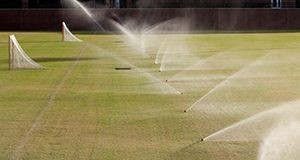Abstract
Water is a precious resource that is invaluable to the state of Florida. The amount of water being used daily in the state is estimated at 14.3 million gallons. Part of a series dedicated to describing the preferred ways of learning about agricultural water use in Florida, this study can be used to assist Extension educators and the agricultural industry at large in the development of strategies meant to inform people about the realities of water use. This 4-page fact sheet helps Extension educators understand preferred learning mediums so they can provide useful information about agricultural water use. Written by Courtney T. Owens, Alexa J. Lamm, and Ricky W. Telg, and published by the Agricultural Education and Communication Department, April 2016.
References
Lin, C. A. (1996). Looking back: The contribution of Blumler and Katz's uses of mass communication' to communication research. Journal of Broadcasting & Electronic Media, 40(4), 574-581. https://doi.org/10.1080/08838159609364379
Marella, R. L. (2015). Water withdrawals in Florida, 2012 (No. 2015-1156). US Geological Survey. Retrieved from https://pubs.er.usgs.gov/publication/ofr20151156 https://doi.org/10.3133/ofr20151156
Maupin, M. A., Kenny, J. F., Hutson, S. S., Lovelace, J. K., Barber, N. L., & Linsey, K. S., (2014). Estimated use of water in the United States in 2010: U.S. Geological Survey Circular. Retrieved from http://dx.doi.org/10.3133/cir1405 https://doi.org/10.3133/cir1405
Ota, C., DiCarlo, C. F., Burts, D. C., Laird, R., & Gioe, C. (2006). Training and the needs of adult learners. Journal of Extension, 44(6). Retrieved from http://www.joe.org/joe/2006december/tt5p.shtml
Oxarart, A., & Monroe, M. C. (2012). Using interesting text to communicate complex natural resources issues. Journal of Extension, 50(1). Retrieved from http://www.joe.org/joe/2012february/a8.php
Patterson, L. (2012). 2012 RBC Canadian water attitudes study. RBC Blue Water Project. Retrieved from http://www.rbc.com/community-sustainability/environment/rbc-blue-water/index.html
Stone, G., Singletary, M., & Richmond, V. P. (1999). Clarifying communication theories: A hands-on approach (1st ed.). Iowa State University Press.
USGS Water Science School (2015).Water questions and answers: Which states use the most water? US Geological Survey. Retrieved from http://water.usgs.gov/edu/qa-usage-statemost.html

